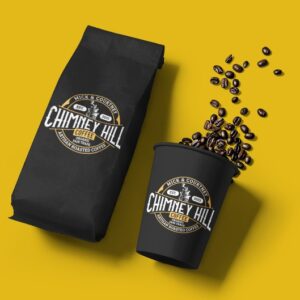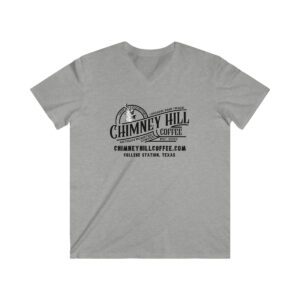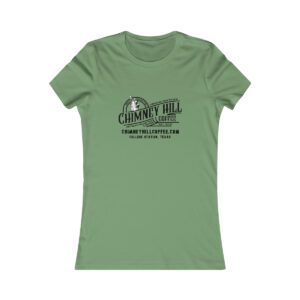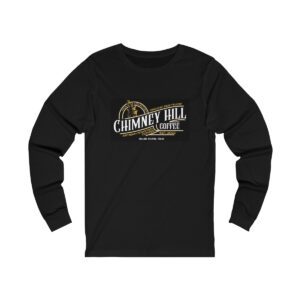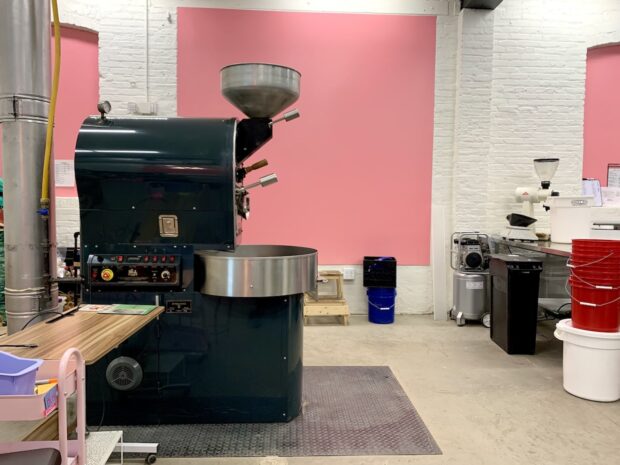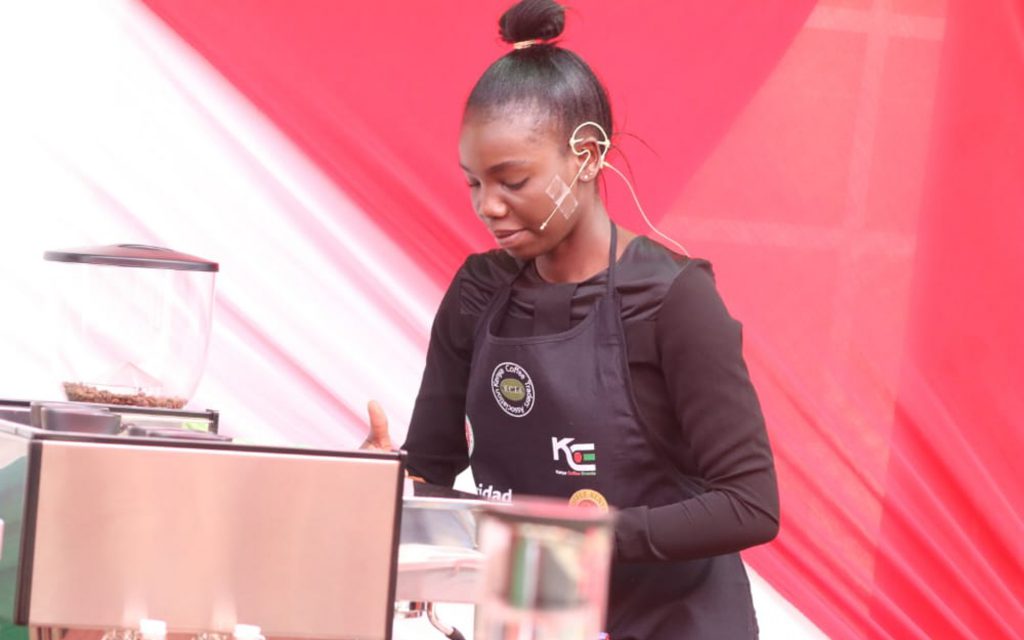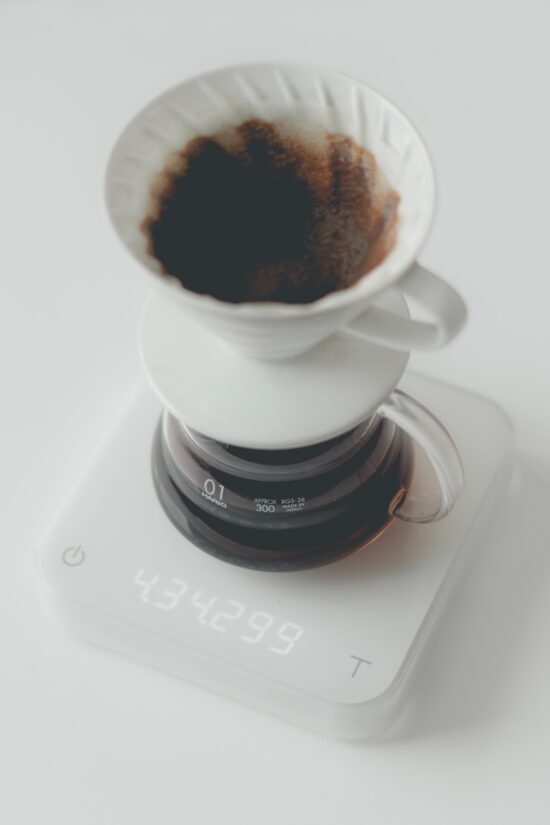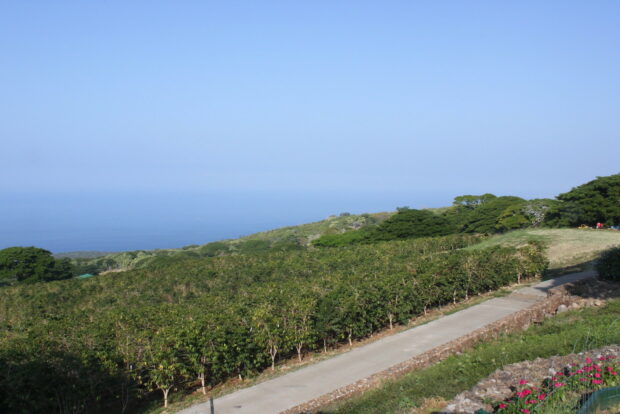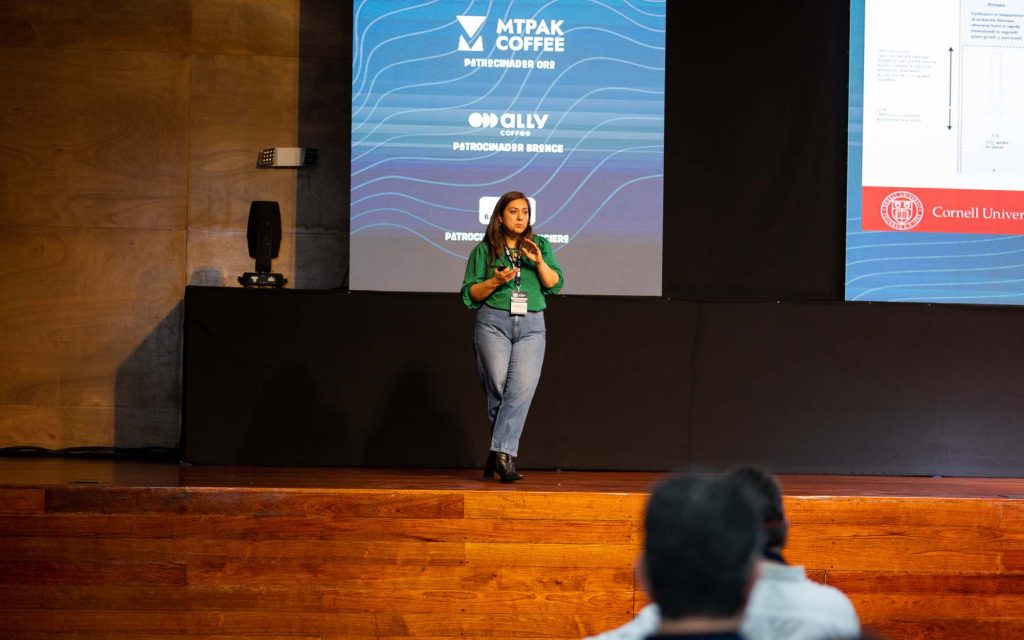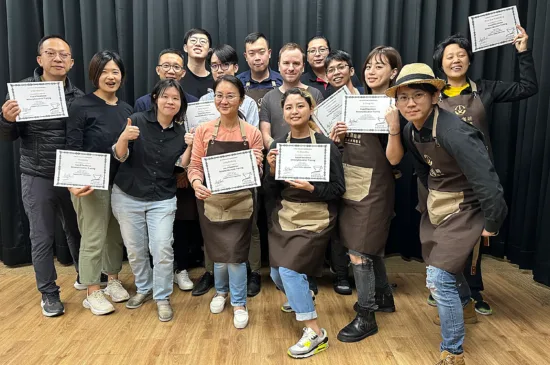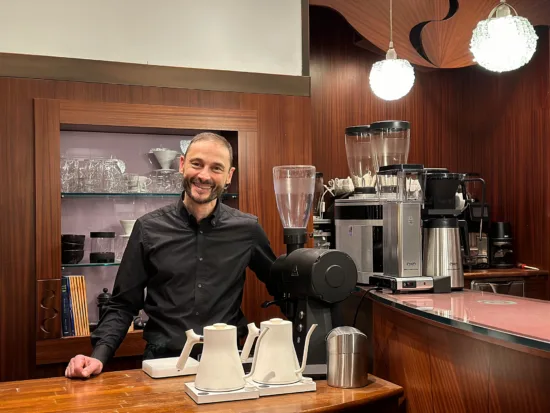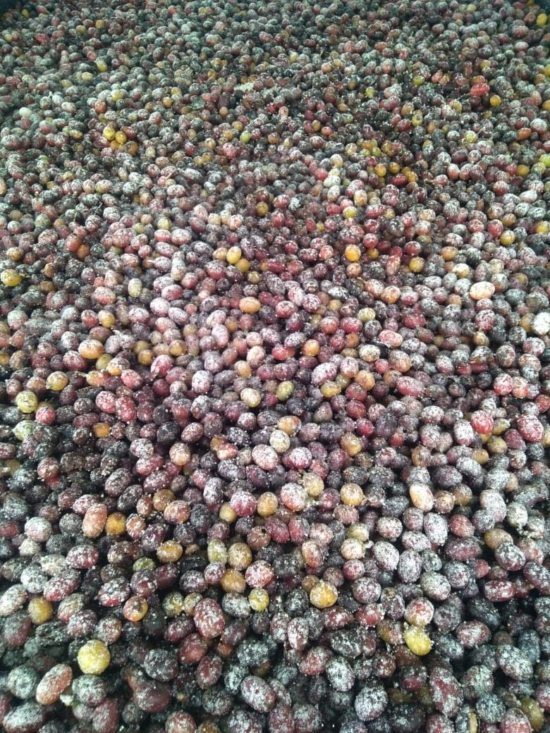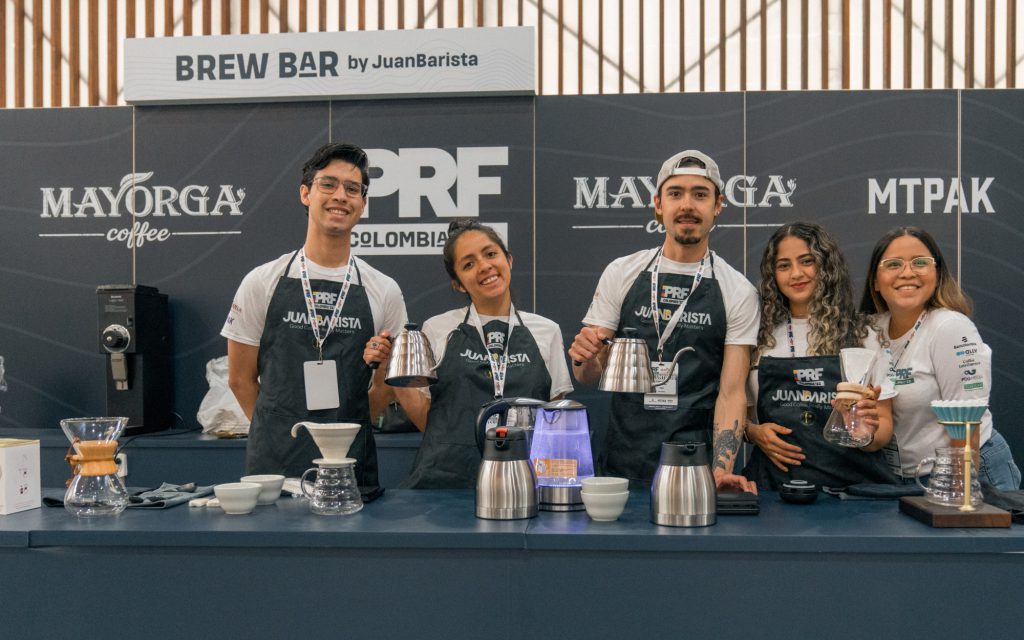The most affordable Keurig coffee maker is available exclusively at Walmart and comes at a sweet price of only $59.00. In this article, you’ll find out how good it really is, and also find additional information like how to clean it, or do you need a water...
Do we need to rethink the relationship between grind size and coffee extraction?
Do we need to rethink the relationship between grind size and coffee extraction?
Do we need to rethink the relationship between grind size and coffee extraction?
Do we need to rethink the relationship between grind size and coffee extraction?
Do we need to rethink the relationship between grind size and coffee extraction?
Do we need to rethink the relationship between grind size and coffee extraction?
Quick French Press Iced Coffee (No, It’s Not Cold Brew)
This is the absolute fastest way to make French press iced coffee. Just forget about cold brew concentrate – with this Quick French Press Iced Coffee Recipe you can have your iced coffee ready in 5 – 6 minutes. Who doesn’t like the French press?! It’s...
Here’s How to Change Keurig 2.0 Water Filter Easily
Not sure how to change Keurig 2.0 water filter? Here are step-by-step instructions that will help you do it quickly and easily. Keurig water filter should be changed every 2 months or 60 tank refills. The water filter is located inside the water tank, on the valve at...
The coffee rose for assessing Anaerobic coffee
I just came across this really neat tool to assess anaerobic coffees. I haven't used it for cupping yet. I'm not sure I will like it either because the idea of lowering the score of the coffee just because it tastes has some thyme flavors. At the same time I...
Three US Coffee Championship Events Are Heading To Rancho Cucamonga
This article is from the coffee website Sprudge at http://sprudge.com. This is the RSS feed version. The 2024 US Barista Championship, Brewers Cup, and Cup Tasters will take place March 15-17 at Klatch Coffee Roasters in Rancho Cucamonga, California.
The Origin Story of Turtle Island Coffee in Vancouver, B.C.
A new Indigenous-owned coffee company based in Vancouver, British Columbia, called Turtle Island Coffee has launched with the goal of exposing more people to high quality specialty coffee and Indigenous...
Get Ready for The Barista League’s 2024 Season
The Barista League has announced 12 competitions across four continents. BY J. MARIE CARLANBARISTA MAGAZINE ONLINE Photos courtesy of The Barista League When The Barista…
Get Ready for The Barista League’s 2024 Season
The Barista League has announced 12 competitions across four continents. BY J. MARIE CARLANBARISTA MAGAZINE ONLINE Photos courtesy of The Barista League When The Barista…
Get Ready for The Barista League’s 2024 Season
The Barista League has announced 12 competitions across four continents. BY J. MARIE CARLANBARISTA MAGAZINE ONLINE Photos courtesy of The Barista League When The Barista League announces new events, it’s worth paying attention! This year, the schedule will be...
Weekly Coffee News: EUDR and Africa + More Celebrity Coffee
Welcome to DCN’s Weekly Coffee News. Keep up with all the latest coffee industry stories and career opportunities by subscribing to DCN’s newsletter. Tell our editors about your news here. Report: Small-Scale Farmers in...
Do Higher Coffee Prices Mean More Money For Farmers? A Story From Sumatra Shows It’s Complicated
This article is from the coffee website Sprudge at http://sprudge.com. This is the RSS feed version. Since coffee costs more now than ever, do those coffee prices impact the amount of money earned by coffee farmers?
Coffee News Recap, 2 Feb: Applications open for Australia’s Richest Barista 2024, De’Longhi reports 4.6% revenue increase after La Marzocco move & other stories
Every Friday, Perfect Daily Grind rounds up the top coffee industry news from the previous week. Here are this week’s coffee news stories. The word of the week is: expansion. Mon, 29 Jan AeroPress launches limited-edition Clear Pink brewer. The coffee brewer is made...
Watch The 8 Best Coffee Videos Vying For Sprudgie Awards
This article is from the coffee website Sprudge at http://sprudge.com. This is the RSS feed version. The best coffee videos from 2023 featuring Cafe Imports, Aramse, Nguyen Coffee Supply, Wildly, Mirror Coffee Roasters, Alto Stories, Quek Shio, and Cafe Retiro.
Robusta is great and has untapped potential
I live in the US and my typical choice of coffee is lightly roasted Ethiopian pour overs. I generally love acidity and fruit flavors in my coffee. My experience with Robusta has often been poor. Very dark, roasty and maybe chocolatey. I participated in the Hoffman...
Design Details: Brewing Reinvented at ULA Café in Melbourne
Welcome to Design Details, an ongoing editorial feature in Daily Coffee News focused on individual examples of coffee shop architecture, interior design, packaging design or branding. If you are a coffee...
Robert Downey Jr.’s New “Happy Coffee” Is Really Depressing
This article is from the coffee website Sprudge at http://sprudge.com. This is the RSS feed version. Robert Downey Jr. and Craig Dubitsky team up for Happy Coffee.
Out Now: The February + March 2024 Issue of Barista Magazine!
In our new issue we feature Lisa Lawson from Glasgow, Scotland, take a look at the newest grinders, explore spring drink inspiration, see how more women are getting involved in coffee tech, and much more! BY SARAH ALLENBARISTA MAGAZINE We’re stoked to announce the...
The coffee industry’s biggest competition: The story of the World Barista Championship
Every year, the global coffee industry gears up for one of its most exciting and groundbreaking competitions: the World Barista Championship. For more than two decades, the WBC has been one of the biggest catalysts for change and innovation in specialty coffee, and...
The 2023 Specialty Coffee Transaction Guide Has Landed
The 2023 edition of the Specialty Coffee Transaction Guide (SCTG) guide went live today, providing actors throughout the coffee chain a data-driven tool for green coffee price discovery. The full...
Espro great until I needed replacement filter ☹️
I've had an Espro P7 for nearly four years after seeing glowing praise on this sub (to which I later contributed). Before I bought the P7 I looked at the replacement parts available and they seemed like a solid company in that they sold e.g. replacement filters...
New Bill Requires More Kona In Your Kona Coffee
This article is from the coffee website Sprudge at http://sprudge.com. This is the RSS feed version. Currently a coffee only need to be 10% Kona to be labeled as such.
What’s the best and worst part about owning and running a coffee shop?
I'm not interested in getting into it myself, as I have no experience in the service industry, no real appetite for risk and no desire to run a business in general. But sometimes I think about it and I wonder what's the most enjoyable thing about it and...
minimum dose size?
I use the Hario switch to brew my coffee and am trying to reduce my caffeine consumption. Hence I would like to brew smaller cups of coffee. I am currently using 10g of coffee with 160g of water. (1:16 Ratio) I am wondering if there is a minimum amount of coffee...
[CAFE OWNERS] Background before starting a shop?
I’ve worked in coffee for 6 yrs as a barista and shift supervisor and have passion for it. I’ve decided that I want to open my own place in the future and so I’ve been doing the research to make a business plan. Lately, however, I’ve begun to realize just how many...
Do we need to rethink the relationship between grind size and coffee extraction?
There are a number of variables we must account for when extracting coffee – whether as espresso, filter, or other brewing methods such as cold brew. These include dose, yield, total extraction time, water temperature, grind size, and more.
Although all of these variables have a significant impact on the extraction of a coffee’s flavours and aromas, grind size is arguably one of the most important. Choosing the right grind size for your recipe ultimately means that you can extract the best qualities from your coffee.
However, in recent years, more and more coffee professionals have started to experiment with different grind sizes for a variety of extraction methods, from espresso to the V60, for example. In theory, using a variety of different grind sizes could allow you to unlock a range of new flavours and aromas in coffee – if carried out in the right way.
This raises an important question: do we need to reassess the relationship between grind size and extraction method? To find out, I spoke with Professor Chahan Yeretzian and Scott Rao.
You may also like our article on how you can brew coffee with the AeroPress using different grind sizes.

Understanding grind size
The vast majority of coffee grinders (both commercial and home) can be set to a number of different grind sizes. Essentially, this is an indicator of the size of each particle of ground coffee.
In specialty coffee, the term “grind size” is used to describe how coarse or fine you need to grind your coffee. For example, in order to extract espresso, you need a very fine grind size, whereas when brewing with a French press, a much coarser grind size is more suitable.
The relationship between grind size and extraction method is based on a number of factors, but it largely boils down to total contact time between the brewing water and ground coffee.
Generally speaking, coarser grind sizes require longer extraction times as the particles of ground coffee have a smaller surface area. By increasing the total brew time, you have more of an opportunity to extract the full range of a coffee’s flavours and aromas.
Finer grind sizes, meanwhile, have a greater surface area, which means extraction needs to take place over a shorter period of time – otherwise the coffee will be overextracted, resulting in more bitter flavours. This is why extraction times for espresso typically range between 25 and 40 seconds, whereas it generally takes between three and four minutes to brew filter coffee.
However, no matter which brewing method you use, more or less all of them can be split into two categories: immersion and percolation. In some cases, brewers can be a combination of both, such as the GINA brewer used by 2018 World Brewers Cup Champion Emi Fukahori.
When using an immersion brewing method, ground coffee is in full contact with the brewing water for the entire duration of the extraction. This usually results in a more pronounced mouthfeel.
Conversely, with a percolation brewing method, the brewing water passes through the bed of ground coffee, which means the two aren’t in full contact for the entire duration of extraction – producing a cleaner-tasting coffee.

Are conceptions about grind size changing?
Innovation is an essential part of specialty coffee, but for the most part, ideas about using particular grind sizes for certain brewing methods have largely remained the same – particularly for espresso. In many specialty coffee shops around the world, baristas use a very fine grind size for espresso.
When training baristas how to dial in espresso, the “sand and pebbles” analogy is often used. To illustrate this, if you pour water into two buckets, one containing sand and the other containing pebbles, they fill up at different rates. Water passes through the pebbles much faster, because the space between each pebble is larger than the space between sand particles.
The same analogy can be applied to espresso extraction and grind size. The finer the grind size, the more slowly the water will pass through the puck, whereas water passes more quickly through more coarsely ground coffee.
However, if you grind too fine then this can result in channeling. This is when the grind size is too fine, or when particle size distribution is uneven, so water finds the path of least resistance through a puck, extracting some parts of the ground coffee more than others. Ultimately, this results in a mix of both under and overextracted coffee.
In 2020, Assistant Professor of Chemistry at University of Oregon, Christopher Hendon, published a research paper entitled Systematically Improving Espresso: Insights from Mathematical Modeling and Experiment. In his research, Christopher and his team extracted espresso using several non-traditional variables – such as a lower dose, coarser grind size, and shorter extraction time – while still preserving most of the coffee’s desirable qualities.
Scott Rao is a coffee consultant and author. He tells me while this research is recent, similar extraction techniques have been used by some baristas for years.
“In coffee shops in certain parts of the world, the allongé (also known as a lungo) is a popular drink,” he says. “When I opened a café in Montréal, Québec in 2010, we included the allongé on our menu.
“Typically, it’s a 150ml shot of espresso,” he adds. “When preparing it, many coffee shops in Montréal would use the same grind setting for regular espresso shots, but they would extract for longer.”
Scott emphasises that this results in a lower-quality overextracted espresso.
“In our coffee shop, we used a separate grinder adjusted to a different grind size,” he continues. “We would run the shot between 30 and 35 seconds at a 1:5 ratio of coffee to water.”
For reference, most espresso is extracted using a ratio of one part coffee to two parts water – resulting in a highly concentrated beverage.
“With lighter roast profiles, this extraction method was able to highlight the fruitier and wine-like flavours,” Scott explains.
Professor Chahan Yeretzian is the Head of the Coffee Excellence Centre at Zurich University of Applied Sciences. He explains that while Christopher’s research was insightful, it did not inspire practices to change at most coffee shops.
“When extracting espresso in a café setting, a finer grind size is needed to create more pressure inside of the portafilter,” he says. “This helps to create more resistance to result in a proper extraction.
“However, in theory, if you grind finer then you will increase pressure and extraction yield, but ultimately there is a maximum extraction yield,” he adds. “If you grind too fine, the water flow rate will decrease because there is too much resistance, and it can often result in channeling.”

Is there room for further innovation?
According to Scott, there is always space to experiment more with grind size and extraction.
“There’s never a truly optimal grind size for different kinds of extraction,” he says. “There are too many variables to control and there are many things that we don’t fully understand about extraction, such as astringency and where it comes from.”
He adds that the type of grinder, as well as how the burrs are aligned, can have a big impact on extraction.
“The Mahlkönig EK grinder is not well suited for espresso,” he says.
Chahan also notes that the number of total dissolved solids (also known as TDS) is an important consideration when choosing your grind size. TDS is a measurement of how much of the coffee has been dissolved in the water.
The ideal TDS measurement for filter coffee is between 18% and 22%, whereas this percentage is lower for espresso – around 8% to 12% according to the Barista Institute.
“In my experience, espresso tastes better with a slightly lower TDS level,” Chahan says. “When extracted with a higher TDS level, espresso can taste muddy.”

Looking ahead
Both Chahan and Scott agree that the possibilities are endless when it comes to grind size and extraction, particularly with the increasing use of software and data collection in specialty coffee.
“There is a lot more data available than ever before,” Scott tells me. “With roasting software like Cropster, we’re collecting new types of data.
“We may not always necessarily know which data points will be relevant, but if we have enough data, we can discover new ways of doing things,” he adds. “Furthermore, the more data you have, the more objective you can be, which can help push for further innovation in the coffee industry.”
Moreover, both Scott and Chahan also emphasise that grind size uniformity is by far the most important factor – no matter how coarse or fine you grind your coffee. Whether you are preparing espresso or filter, an even grind size helps to create a more even extraction, allowing a coffee’s best characteristics to shine through.

In summary, there is no right or wrong way to grind coffee for whichever extraction method you choose. While some baristas and coffee shop owners may opt for more traditional methods, others may decide to experiment with more unorthodox grind sizes.
The main focus, however, should be on the end result in the cup. As long as your coffee tastes good, you’re on the right track.
Enjoyed this? Then read our article on how grind size can help you brew better-tasting coffee.
Perfect Daily Grind
Want to read more articles like this? Sign up for our newsletter!
The post Do we need to rethink the relationship between grind size and coffee extraction? appeared first on Perfect Daily Grind.

